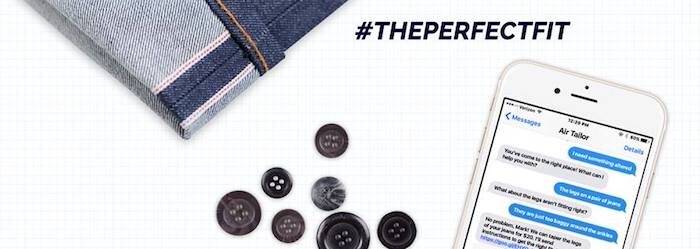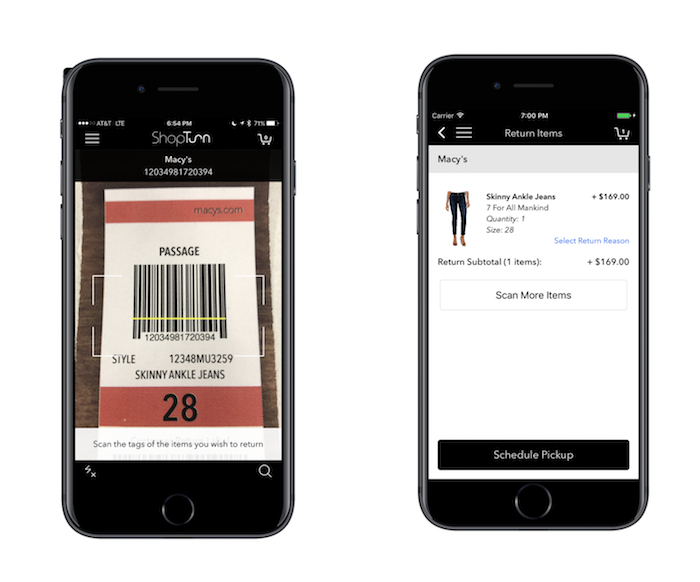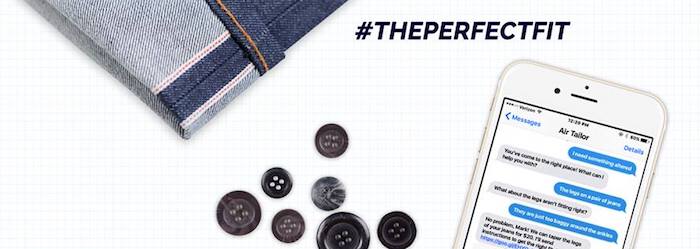New Ecommerce Tools Transform Product Returns into Customer Understanding & Loyalty

Today we’re going demonstrate how leading-edge ecommerce tools transform product returns into strong customer relationships. During the January work of holiday returns, this idea may seem far-fetched, but think about this: Inc Magazine just published an article naming the 6 traits needed to be a successful entrepreneur in 2018. Number one on their list? Optimism. When applied to retail, optimism sees opportunity in one of the toughest aspects of the business: returns.
We’ll introduce you to two start-ups that are developing technology to serve shoppers in the return and fitting process. In its own way, each company is reinventing the post-purchase customer experience. We’ll also share how to use the data generated by returns to improve your products–and your customer relationships.
Related: More Payment Options Bring More Sales
Opportunity for Customer Loyalty: ShopTurn

We’re kicking off with ShopTurn, an on-demand return pick-up service, because it’s important for ecommerce entrepreneurs to be aware of upcoming customer expectations. That said, for now, ShopTurn serves larger retailers with a brick and mortar presence.
In the words of Jonathan Nassimi, ShopTurn Founder and CEO, “Retailers have worked hard to improve the purchase experience, but there’s been little or no innovation in the post-order experience.”
He and his team set out to change this. Traditionally, customers have returned products in-store, taking time and effort with traffic, parking, etc. Jonathan goes on to say that the online returns process “hasn’t been much better.” Customers have a tedious process here, too, with printing shipping labels, driving to mail the return, and other steps.
Now after embedding the ShopTurn software into a store’s mobile app, retailers can offer shoppers an alternative. To return an item, the customer uses her phone to scan in the purchase receipt and item tag. She then enters the address and time she’d like for the return to be picked up.
Next a messenger goes to her address at the appointed time to accept the return. The messenger inspects the return, adhering to the unique return criteria set by each retailer. Once the messenger has completed the inspection process, and the return meets the retailer’s criteria, the messenger issues the customer’s return right then and there. It’s the same return inspection process, only now it happens at the customer’s door, rather than in-store.
“Returns are one of the most frustrating parts of the customer experience,” Jonathan explains, “If a retailer can remove this friction, then customer loyalty increases. The customer’s perceived risk is lowered, and this encourages them to buy more and to make larger purchases.”
Opportunity for Customer Understanding: Air Tailor

According to Brian Flynn, Co-founder and Chief Product Officer for Air Tailor, “As of now, only about 40% of people are willing to buy clothing online due to concerns about fit. And about 60% of clothing is returned due to lack of fit.”
Air Tailor is at the forefront of solving the fit issue for retailers. Their current product addresses fit in physical stores, at the point of sale. The process begins in a familiar way: a store associate works with the customer to plan tailoring for his new garment.
Yet, instead of recording this information on paper and handing it off, the associate submits the tailoring information via Air Tailor. From there, one of the tailors in Air Tailor’s network completes the work. Approximately five days later, the tailored piece is delivered to the customer. He no longer has to deal with picking up his tailoring; it comes straight to him.
In the Air Tailor process, retailers get to know and record their customers’ fit. This conversation between retailers and shoppers can illuminate a lot. For instance, if merchants repeatedly see the same tailoring need, they can review possible issues with a garment. Also, sales associates learn which clothing brands suit customers best, and thus, can make informed recommendations. Retailers can also store customers’ tailoring preferences for future purchases, resulting in increased loyalty.
The countdown clock on Air Tailor’s site hints at new products in the pipeline. We can’t share too much yet, but let’s say that they’re planning to address fitting needs for online retailers in a super helpful way. Stay tuned.
Opportunity for Product and Customer Data

While ShopTurn and Air Tailor address in-store returns (with more services to come!), exclusively online retailers can find invaluable data through their returns, too. The key to success here lies in good communication.
With this, we mean good communication with everyone in the process. First, with the customer. When a retailer asks for customer feedback regarding the return, she should be specific in the reason codes. Rather than offer just “Didn’t fit” as an option, prompt the customer to give more information. Offer the option to explain: “Didn’t fit in the Hips/Shoulders/Waist; Circle One.” Spell out the possibilities to the customer. Also, give customers space to write out their own reasons. Merchants want to collect as much information as possible here. This results in powerful data!
Next, retailers want to have strong communication with the people who are processing the returns, be it in-house, third party, or distribution center. Through feedback from the receiving manager, retailers should know the answers to questions like these:
- Is the customer’s description of the return accurate?
- Is the sizing for this garment off?
- Do I need to address a quality issue with the vendor?
- Is this particular shopper a “serial returner”?
Merchants with an open line of communication with the Receiving Dept. will learn a lot. By staying informed on returns, retailers can respond to product or customer issues before they get overwhelming.
In conclusion, remember that returns are an opportunity to get to know your customer. Your conversation about a product return can lead to better understanding and loyalty.
Also, keep in mind that for online purchases, the customer will likely revisit to your online store to initiate the return. What incentives can you offer her to purchase again? For inspiration on this idea, take a look at Command C’s Top Tips to Boost Average Order Values. And then let’s talk about how ecommerce tools transform product returns into customer opportunities for your store.
